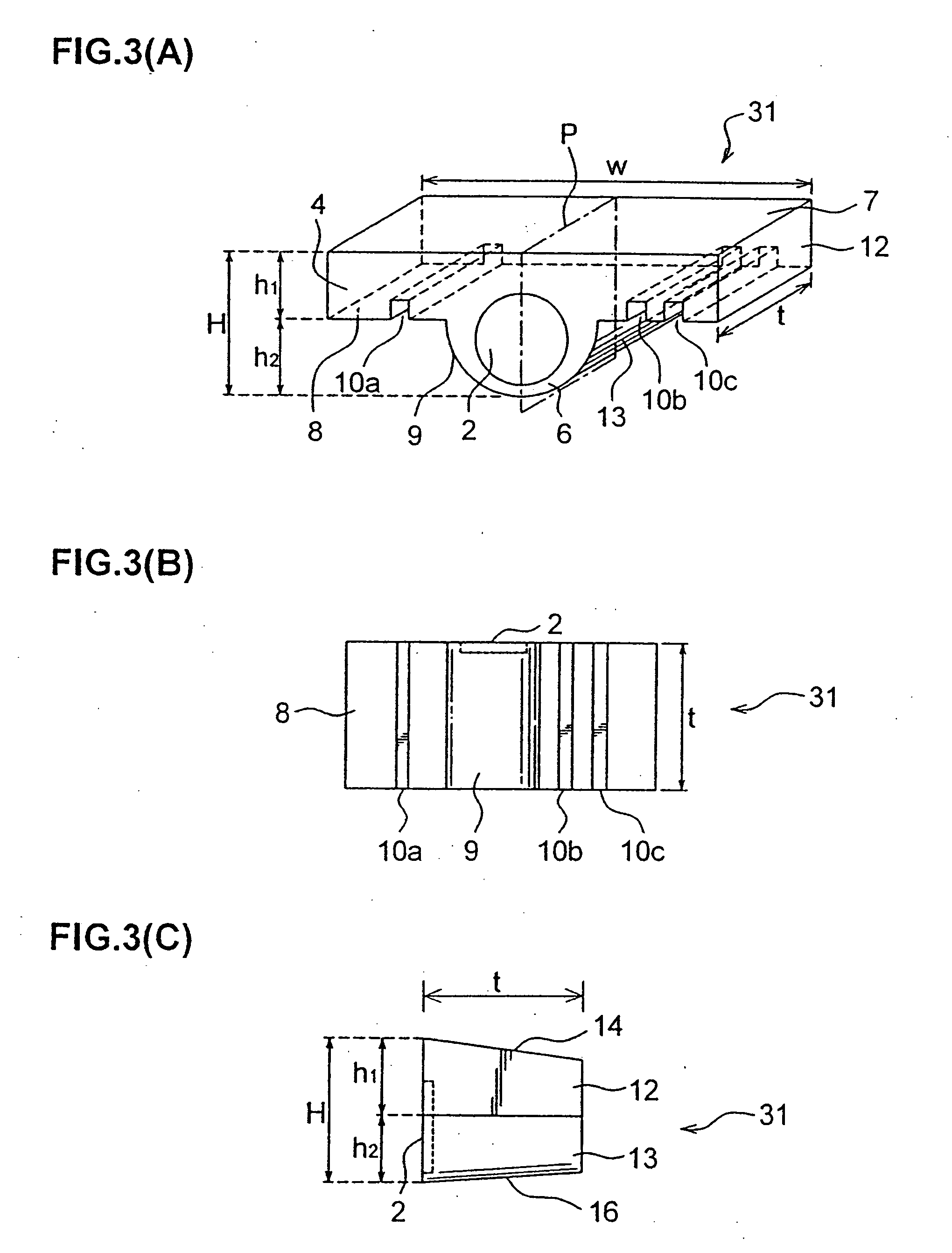Optical member with handling portion and method for manufacturing optical member and method for mounting optical member and optical module
- Summary
- Abstract
- Description
- Claims
- Application Information
AI Technical Summary
Benefits of technology
Problems solved by technology
Method used
Image
Examples
second embodiment
[0108]FIG. 2 is a perspective view showing the constitution of a lens element 21 according to the invention. The lens element 21 has a mark 20 put on the upper flat plane 7 of the handling portion 4, and except for this point, the lens element 21 has the same constitution as the lens element 1. In the example shown in FIG. 2, the mark 20 is made in the form of a groove as put on one side portion of the upper flat plane 7 of the handling portion 4. Being provided with the mark 20 like this, the handling portion 4 comes to be asymmetric with respect to a virtual plane P which passes through the optical axis of the lens portion 2 and is perpendicular to the surface of the lens portion 2 and to the extending direction of the handling portion 4 as well. The lens portion 2 is formed only on one side plane of the optical substrate.
[0109] In FIG. 2, seeing the lens element 21 placed in such a position that the mark 20 comes on the left side of the figure, you would see it with ease, with th...
third embodiment
[0114] Constitution of a lens element 31 according to the invention is shown in FIGS. 3A through 3C, wherein FIG. 3A is a perspective view of the lens element 31, FIG. 3B a bottom view of the same, and FIG. 3C a side plan view of the external form of the same, respectively. As will be seen from the above three figures, the lens element 31 is provided with three positioning grooves 10a, 10b, and 10c formed on its bottom plane 8. As shown in FIG. 3C, the height of the lens element 31 is not uniform but slightly varied in the direction of its thickness t. The other constitution is the same as that of the lens element 1.
[0115] Three grooves 10a, 10b, and 10c are formed to open toward the lens formation plane and the opposite plane thereof as well, and to extend from the lens formation plane side to the opposite plane thereof, going across the thickness t of the lens element 31. At least one of three grooves 10a, 10b, and 10c is used for positioning of the lens element 31 when mounting i...
fourth embodiment
[0118]FIG. 4 is a perspective view showing the constitution of a lens element array 41 according to the invention. The lens element array 41 is made up of a plurality of lens elements 1 which are connected in series with one another to form an array extending in one direction. That is, the lens element array 41 is made of the optical substrate and includes a plurality of lens portions 2 arranged to form an array, a plurality of edge portions 6, each of which is located on the lower side of the external circumference of each lens portion 2 and has a circular arc shape lying along the circular circumference of the lens portion 2, and a handling / supporting portion 4a which is formed to connect and integrate all of the lens portions 2. The handling / supporting portion 4a is connected with each lens portions 2 on the other side of the external circumference thereof, extends in the direction of the aligned lens portions 2 on the surface approximately in parallel with the surface of the len...
PUM
 Login to View More
Login to View More Abstract
Description
Claims
Application Information
 Login to View More
Login to View More - R&D
- Intellectual Property
- Life Sciences
- Materials
- Tech Scout
- Unparalleled Data Quality
- Higher Quality Content
- 60% Fewer Hallucinations
Browse by: Latest US Patents, China's latest patents, Technical Efficacy Thesaurus, Application Domain, Technology Topic, Popular Technical Reports.
© 2025 PatSnap. All rights reserved.Legal|Privacy policy|Modern Slavery Act Transparency Statement|Sitemap|About US| Contact US: help@patsnap.com



